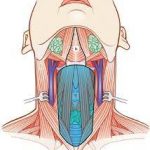Table of Contents
What is selective neck dissection?
Selective neck dissection is a surgical procedure for removing cervical lymph nodes that are at risk of metastatic cancer. It involves preserving one or more lymph node groups that are removed in radical neck dissections.
What are the indications of selective neck dissection?
It involves eliminating one or more lymph nodes that are at risk for metastatic cancer. The intensity of the risk depends on the size and location of the primary tumor. The removal of lymph nodes depends on the location of the primary tumor and its spread. If cancer has not spread, the surgeon will remove fewer lymph nodes. Usually, all the neck muscles, nerves, and blood vessels are preserved in selective neck dissection.
General Indications
Selective neck dissection is beneficial for head and neck cancer patients
- Who are at risk for metastatic disease in the regional cervical lymph nodes.
- Having no evidence of clinical metastases and risk of occult metastatic disease in the neck.
- For whom surgery is the viable treatment of the primary lesion.
Additional indications include situations where surgical access to primary cancer extends to lymph nodes at risk for metastases.
Duration of surgery
The surgery takes around 2-4 hours. The patients can go home in 2 to 3 days.
Before the Procedure
- Tell your doctor if you are or could be pregnant.
- Stop taking blood thinners before surgery. Ask your doctor about medicines you can take before the procedure.
- Avoid eating or drinking after midnight the night before the surgery.
Procedure in brief
During the procedure, you will be asleep on the surgical table due to the effect of genereal anesthesia.

The surgeon will
- Make a cut that runs along a skin crease in the neck, extending on the side of the neck. Incisions enhance the visualization and protection of essential structures in the neck. It enables the safe removal of lymph nodes that harbor cancer.
- Remove the lymph nodes, and tissues are sent off to pathology department for histopathological testing.
- Usually, a drain is placed in the neck to remove any collected blood or lymph fluid in the post-operative period
- Stitch the incision in multiple layers after controlling any bleeding points.
After procedure
A nurse will move you to the recovery room after surgery.
You will
- Have an IV line for receiving fluids and nutrition because you may not be able to drink or eat for the next 6-8 hours.
- Start physical therapy in the hospital and after you go home. A nurse will assist you in moving around a little on the day of the surgery.
- Receive pain medicine and antibiotics via IV line for the next few days.
- Have drains in your neck.
- Have staples or sutures around the wound.
Risks and complications
- Allergic reactions to certain IV medications such as antibiotics
- Breathing problems
- Bleeding
- Infection of the sutured site
- Numbness over neck in rare cases
- Shoulder, neck and arm stiffness
- A drooping shoulder on the side of the surgery
- Problems while talking
- Dysphagia
When to call a doctor:
Contact your doctor if you have.
- High Fever above 100.5°F (38.5°C).
- Severe pain.
- Bleeding from incision site
- Dysphagia (Painful swallowing)
- Choking or coughing while swallowing.
- Shortness of breath (Dyspnea)
Questions to ask the doctor
- What is the need for selective neck dissection?
- Do you have other options to treat my condition?
- What will be the duration of the surgery?
- How will it affect my speech and swallowing?
- When can I go home?
- What are the post-procedure precautions?
- When can I resume my work?
- What assistance will I need at home?
- How to manage postoperative pain?
- What additional treatment will I need?
- When can I start eating solid food?
- When should I follow up?
- How might surgery affect my daily life?
- When and how should I contact you?
